Sarah Browning, Nebraska Extension Educator
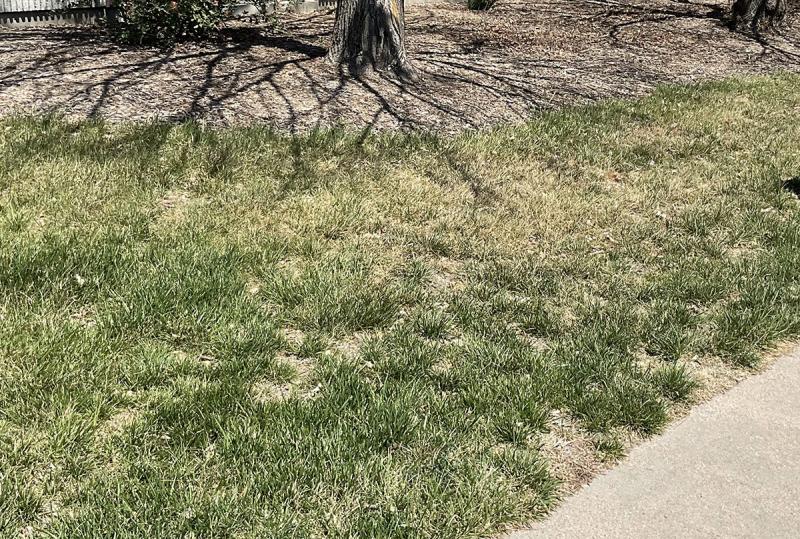
Drought stressed turf will have a brown coloration. Long term drought kills plants and causes turf thinning.
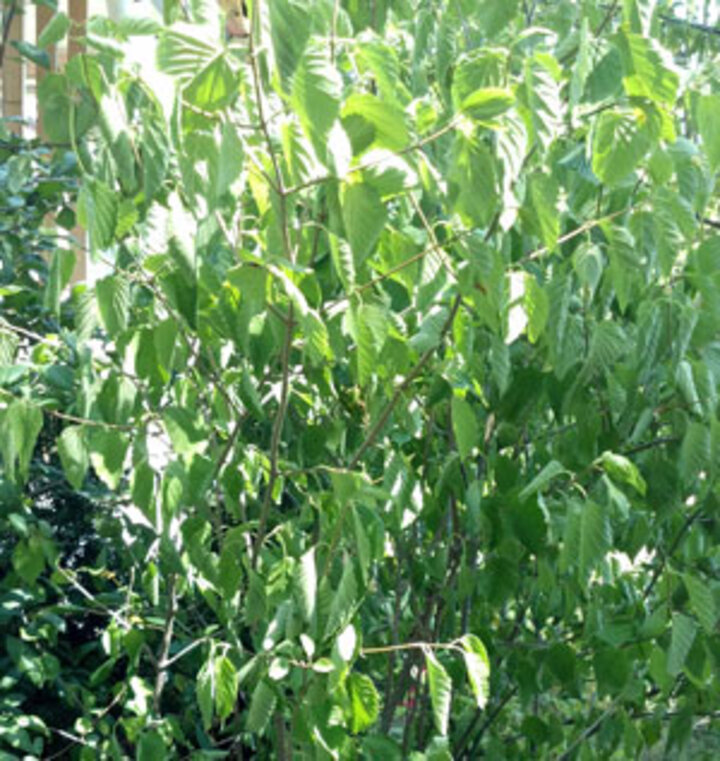
High temperatures and dry conditions have resulted in many lawns turning brown in the last two weeks, but all plants suffer during hot, dry conditions. With 12 days of 90+ degree heat from July 1st to 17th, and a 3 inch rainfall deficit in eastern Nebraska, plants are requiring much higher amounts of water than normal to maintain normal functions. Knowing how and when to water, as well as setting landscape priorities can help you focus your efforts.
Water requirements for trees and turfgrass vary by species and soil type. Deep, infrequent applications of water are recommended for all irrigation applications, in all types of soil, but how this is accomplished varies by soil type. Sandy soils absorb water quickly and release it easily to plants, but the amount of water sandy soil can hold at any one time is low. Clay soils can hold a lot of moisture, but absorb water slowly. The goal is to moisten soil to the base of the plant's (grass or tree) root system with each irrigation, then allow the top few inches at the soil surface to dry before watering again. Sandy soil will dry more quickly than clay soil, so base water applications on how quickly the soil dries.
Lawns
Although turfgrasses perform best under slightly dry conditions, drought affects on lawns have been dramatic in recent weeks. Kentucky bluegrass and tall fescue lawns require 1 inch of rainfall or water per week when temperatures are below 90 F degrees to maintain good growth and health. When temperatures are between 90-100 F degrees 1.5 inches of water is required. Right now, more than 1.5 inches of water each week may be required to keep plants growing normally, depending on soil type, sun exposure and wind.
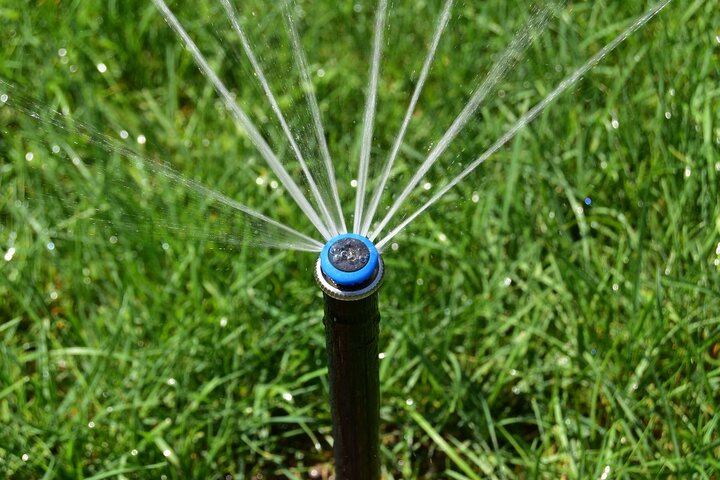
Monitor the output of your irrigation system by using empty coffee cans, tuna cans or other straight-sided containers to measure the amount of water sprinklers put out in a certain amount of time, and adjust the run time so the required amount is delivered. After irrigating, determine how deeply the water has infiltrated by sticking a screwdriver in the soil. Kentucky bluegrass roots are approximately 4- 6 inches deep during mid-summer, so moisten the soil to the base of their root system.
Here are a few tips to help your lawn survive the hot, dry conditions.
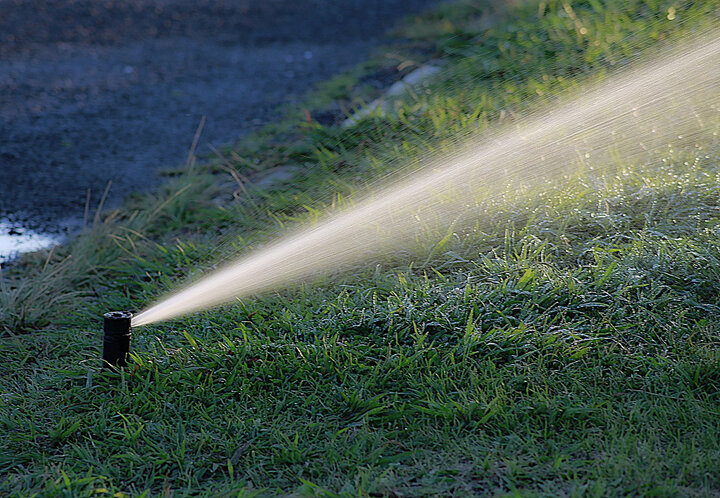
- Inspect your irrigation system. Make sure all sprinkler heads are working properly, and adjust the sprinkler pattern as needed to cover dry spots.
- Sharpen your mower blade. A sharp blade creates a small wound when the leaf blades are cut, which translate into less water lost through the wound and lowers the incidence of fungal infections.
- Mulch the lawn. When mowing allow the grass clippings to remain on the lawn, where they will filter down to the grass crowns and provide moisture-conserving mulch.
- Allow your lawn to go dormant. Consider allowing certain turfs, such as Kentucky bluegrass and buffalograss, to go dormant. Since dormant plants are more easily damaged by traffic, limit foot traffic and mowing on dormant turf and irrigate it with 1/4 inch of water every 4-5 weeks if no rain falls. Tall fescue does not have the ability to go dormant; if it turns brown due to drought, it is dying.
- Reseed. If your lawn suffers plant death and thinning due to drought, plan to aerate and overseed the lawn from late August through mid September.
Additional information on watering turfgrasses is available in the publication Irrigating Home Lawns.
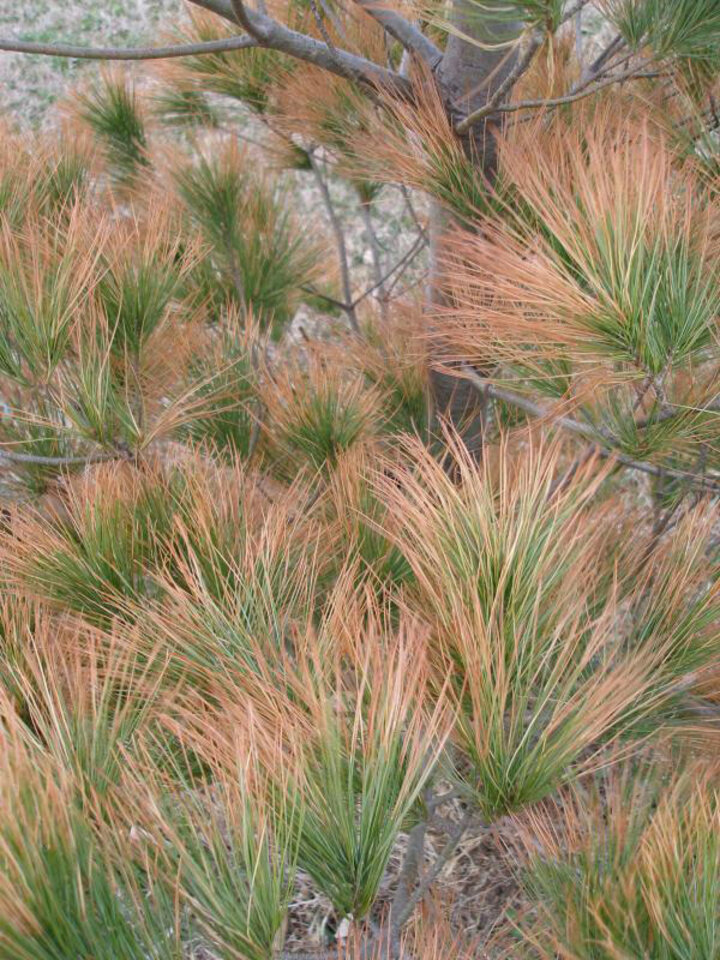
Trees & Shrubs
Drought stress is often slower to appear in woody plants, but can have long-term consequences. Drought stressed trees are more susceptible to secondary attack by insect pests and disease problems, such as borers and canker diseases, which can cause tree death.
One common symptom of drought stress is leaf scorching, a uniform yellowing or browning of the edges of leaves on broadleaf plants or the tips of evergreen needles. However, even trees that don't exhibit leaf scorch can be experiencing drought stress, and once a tree is stressed it takes 3-5 years of normal moisture conditions before the tree recovers its full vigor. Healthy trees, receiving adequate water, are much more resistant to pest problems.
How Deep Are Tree Roots?
To water properly, its important to know where, how much and how often water should be applied to established landscape trees. Water should always be placed where the roots are growing. Research shows more than 70 percent of tree roots are in the top 24 inches of soil, where the water, oxygen and nutrients they need for healthy growth are available. Water placed below 24 inches cannot be absorbed by the roots.
One mistake frequently made by homeowners with in-ground irrigation systems, is watering too often. Applying a light application of water daily or every other day results in a shallow layer of continually saturated soil. It also drives oxygen out of the underlying soil, resulting in severe root decline or death. Frequent, light applications of water is one of the most common causes of tree death.
Sandy Soil
It is almost impossible to overwater trees in sandy soil, though it is wasteful. When too much water is applied to sandy soil it drains quickly through the soil and isn't available to tree roots. Frequent watering in low amounts is the best way to water trees in sandy soil. Ideally, soil should be moist 18 inches into the ground for as long as the tree is growing. Watering every five to seven days may be necessary for trees in sandy soils to maintain adequate moisture in high temperatures and high winds.
Clay Soil
Proper watering can be difficult in clay soils because water often doesn't easily enter the small pores spaces in clay soils, so it percolates into the soil slowly. Water applied too quickly to clay soils runs off and is wasted. However, once clay soils are wet they hold moisture for long periods of time. To avoid water runoff, apply water slowly. When using an irrigation system, cycle through a few zones once, then cycle through them a second time in the same day to achieve a deeper level of watering.
If using a sprinkler, let it run in a low pattern in one area until the top 12-24 inches of soil is moistened then move it as needed to water the entire area underneath the tree's canopy. A deep soaking every 2 weeks is adequate for most trees in unirrigated landscapes.
Finally, make sure trees and shrubs have a 3-4 inch layer of wood chip mulch to hold moisture in the soil.
Images
- Drought stressed shrubs wilt, as seen in this arrowwood viburnum. Image by Sarah Browning, Nebraska Extension Educator.
- Monitor irrigation heads to make sure they are working correctly. Image by Pixabay.com.
- Doing an audit of your irrigation system's water output helps landscape managers more efficiently use water and maintain plant health. Image by Pixabay.com.
- Desiccation symptoms on white pine needles. Image by Sarah Browning, Nebraska Extension Educator.
Search Our Archive
Associated Video
Watering Drought Stressed Trees and Shrubs
UNL East Campus Landscape Services Manager Jeff Culbertson demonstrates watering techniques to helping trees and shrubs survive drought.